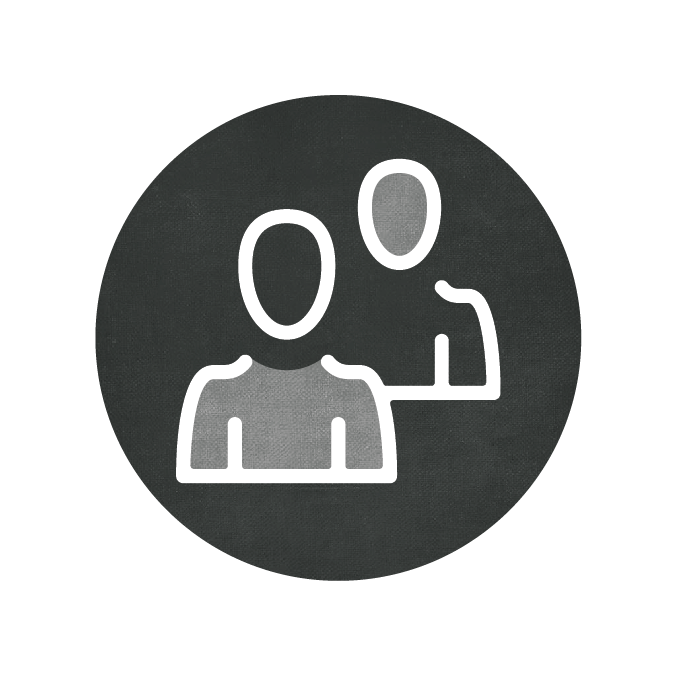*Warning* – The health indicators listed below relate to sensitive topics.
How Adverse Childhood Experiences Impact Health
Adverse childhood experiences (ACEs) include a range of traumatic events such as abuse, neglect, and household dysfunction experienced during childhood. Extensive research has established a strong correlation between ACEs and lifelong mental and physical health challenges1. Studies show that individuals with higher ACE scores are at increased risk of developing conditions such as depression, anxiety, and substance abuse disorders, as well as chronic diseases like heart disease, diabetes, and obesity2. Research has demonstrated that ACEs can lead to changes in the developing brain’s structure and stress response system. These changes can continue into adulthood, influencing emotional regulation, mental health, school and work performance, and overall health outcomes.
ACEs are common across all populations, with a significant portion of individuals experiencing at least one adverse childhood experience3. However, ACEs are often higher among socially marginalized groups, for example, non-white and gender-diverse groups.
Despite the challenges posed by ACEs, their negative impacts can be overcome or mitigated. Families, schools, and communities can all provide support and resources to enhance resilience and counter the impacts of ACEs. Social connections, family relationships, and other protective factors can help prevent ACEs and reduce their long-term negative impacts.
Healthy Youth Survey and ACEs
The Healthy Youth Survey (HYS) is conducted every two years in Washington State (WA) and gathers information on the health and well-being of 6th–12th graders. The HYS assesses adverse experiences reported by youth to better understand how common these experiences are among WA students. The survey includes 11 indicators to measure adverse experiences among youth. Four of the indicators align with the original ACE research; these are listed below under Youth Adverse Childhood Experiences. The remaining indicators are categorized as “other adverse experiences;” some are found on their respective health topic pages.
Some adversity and stress are normal and can foster resilience in children and youth. However, repeated exposure to abuse, neglect, and unstable environments can elevate and prolong stress levels and harm children’s mental and physical health.
Efforts to prevent ACEs and address them with early intervention and support are crucial for reducing their long-term effects and promoting resilience in individuals and communities. Early intervention can prevent long-term mental health issues, reduce the burden on the educational and healthcare systems, and break the cycle of intergenerational trauma.
NOTE: The data below contains sensitive information.
Indicators on this page:
Youth Adverse Childhood Experiences:
Youth Physical Abuse
Why this is important: Youth physical abuse can lead to both immediate and long-term consequences, including physical injuries and emotional trauma, and have an impact on social development. Victims may experience chronic pain, mental health issues like anxiety and depression, and difficulties forming trusting relationships4. The effects of physical abuse can extend into adulthood, affecting various aspects of their personal and professional lives.
Definition: Percent of 10th grade students who report ever being physically hurt on purpose by an adult

Trend: Between 2014-18, the percent of 10th grade students who report ever being physically hurt on purpose by an adult did not change significantly in Whatcom County. A smaller percent of students report being physically hurt on purpose by an adult in 2021. Caution should be used when interpreting 2021 survey data until further data is available.

Geography: In 2021, the percent of 10th grade students who report ever being physically hurt on purpose by an adult was similar to the percent of students across Washington State.

Disparities: In 2021 among 10th grade students who report ever being physically hurt by an adult, disparities are observed for gender identity and sexual orientation. Hover over the data in the subpopulation tabs to discover more.
Youth Sexual Abuse
Why this is important: Sexual abuse experienced during childhood and adolescence can deeply harm youth, causing intense emotional pain, making it hard to form close relationships, and leading to lasting mental health struggles. It can also damage self-esteem, cause feelings of shame and guilt, and disrupt healthy sexual development. Survivors might also have trouble trusting others, engage in risky behaviors, and encounter difficulties in different parts of their lives5. Socially marginalized groups, such as gender-diverse individuals, have a higher rate of childhood sexual abuse.
Definition: Percent of 10th grade students who report having ever been in a situation where someone made you engage in kissing, sexual touch or having sex when you did not want to

Trend: Between 2014-2018, the percent of 10th grade students in Whatcom County that report sexual abuse showed a signifcant increase. The number of 10th grade students who reported sexual abuse during the COVID-19 Pandemic in 2021 is below 15%. Caution should be used when interpreting 2021 survey data until further data is available.

Geography: The number of 10th grade students who report sexual abuse in Whatcom County is similar to that across Washington State in 2021.

Disparities: Disparities exist among the number 10th grade students reporting sexual abuse with regard to gender identity, sexual orientation, and racial group. Hover over the data in the subpopulation tabs to discover more.
Youth Emotional Abuse
Why this is important: Youth experiencing emotional abuse face increased risks of depression, anxiety, and substance use6. Emotional abuse can include yelling or swearing at a child, constant criticism, blaming, humiliation, or threatening. Early intervention can prevent mental health issues, reduce the burden on the healthcare system, and break the cycle of intergenerational trauma. Awareness and support systems for abuse victims can enhance relationships and overall well-being in individuals and communities.
Definition: Percent of 10th grade students who report that a parent or adult in his/her home swore at them, insulted them, put them down or humiliated them

Trend: The percent of 10th grade students in Whatcom County who report emotional abuse by a parent or adult did not change signifcantly between 2016-18. In 2021, during the COVID-19 Pandemic the percent of 10th grade students reporting emotional abuse was lower than in previous years. Caution should be used when interpreting 2021 survey data until further data is available.

Geography: The percent of 10th grade students in Whatcom County who report emotional abuse by a parent or adult is significantly lower than that across Washington State for 2021.

Disparities: In 2021 among 10th grade students in Whatcom County who reported emotional abuse by a parent or adult, there are disparities for gender and sexual orientation. Hover over the data in the subpopulation tabs to discover more.
Youth Witnessing Adult Violence
Why this is important: Witnessing adult violence can deeply affect youth, leading to an increased risk of developing mental health issues like anxiety and depression and engaging in risky behaviors such as substance use7. It can impair their ability to form healthy relationships and negatively impact their academic performance. Prolonged exposure to such violence may perpetuate cycles of aggression and harm in future generations.
Definition: Percent of 10th grade students who have seen an adult hit, slap, punch, shove, kick, or otherwise physically hurt another adult more than one time (not counting TV, movies, video games, and sporting events)

Trend: Between 2010 and 2016, the percent of 10th grade students in Whatcom County who witnessed adult violence decreased significantly, but there has been no change through 2018. During the COVID-19 Pandemic, the percent of student witnessing adult violence in Whatcom County fell to near 20%. Caution should be used when interpreting 2021 survey data until further data is available.

Geography: In 2021, the percent of 10th grade students who witnessed adult violence was similar to that across Washington State.

Disparities: Among 10th grade students in Whatcom County who witnessed adult violence, disparities exist for gender identity, sexual orientation, and racial group. Hover over the data in the subpopulation tabs to discover more.
Other adverse experiences
Youth Experiencing Dating Violence
Why this is important: Experiencing dating violence as a youth can cause physical injuries, emotional trauma, and enduring mental health issues such as anxiety and depression8. It can also lead to social isolation, low self-esteem, and difficulties forming healthy relationships in the future. Youth who experience dating violence may be at higher risk of engaging in risky behaviors like substance abuse and self-harm.
Definition: Percent of 10th graders who reported someone they were dating or going out with physically hurting them on purpose

Trend: The percent of 10th graders in Whatcom County who reported being physically hurt by someone they were dating was stable between 2014 – 2018. Fewer 10th grade students reported being physically hurt by someone they were dating during the COVID-19 Pandemic in 2021. Caution should be used when interpreting 2021 survey data until further data is available.

Geography: The percent of 10th grade students in Whatcom County who report being physically hurt by someone they are dating is similar to that across Washington State.

Disparities: Disparities were not identified or counts were too small to report differences between sub-groups.
Youth Feeling Unsafe with Dating Partner
Why this is important: Feeling unsafe with an intimate partner (someone in a dating relationship) can contribute to a youth’s fear and anxiety. Lack of a sense of safety, including feeling controlled or threatened, can interfere with young people forming trusting relationships and can negatively impact other areas of their lives, such as academic performance, family and social relationships, and overall mental health.
Definition: Percent of 10th grade students who report being limited, threatened, or made to feel unsafe by someone they dated during the past 12 months

Trend: Between 2014 and 2018, the percent of 10th graders who reported feeling unsafe with an intimate partner increased significantly in Whatcom County. During the COVID-19 Pandemic the percentage of 10th graders reporting this feeling fell to 15.7%. Caution should be used when interpreting 2021 survey data until further data is available.

Geography: The percent of 10th grade students in Whatcom County who report feeling unsafe with an intimate partner is similar to the percent across Washington State.

Disparities: Among 10th grade students who report feeling unsafe with an intimate partner in Whatcom County, disparities exist for gender identity and racial group. Hover over the data in the subpopulation tabs to discover more.
Youth Experiencing Bullying
Why this is important: Youth who experience bullying often struggle with feelings of fear, sadness, and low self-esteem9. This can lead to social isolation, low school participation or performance, and mental and physical health problems. The effects of bullying can persist into adulthood, impacting relationships and overall well-being. Marginalized groups, such as non-white and gender-diverse youth, are more likely to be targets of bullying.
Definition: Percent of 10th grade students who reported being bullied in the past 30-days

Trend: Between 2016 and 2018, the percent of 10th grade students who report being bullied in the past 30 days increased significantly to nearly 24%. During the COVID-19 Pandemic the percent of 10th graders who report being bullied fell below 15% in Whatcom County. Caution should be used when interpreting 2021 survey data until further data is available.

Geography: In 2021, the percent of 10th grade students who report being bullied in the past 30 days in Whatcom County was similar to that across Washington State.

Disparities: In 2021, among the number of 10th grade students who report being bullied in the last 30 days, evidence of disparities was found with regard to gender identity, sexual orientation, and racial group. Hover over the data in the subpopulation tabs to discover more.
Youth Feeling Safe during School
Why this is important: Feeling safe at school promotes mental well-being, allowing students to focus on their studies and social interactions positively. A safe school environment fosters a sense of security, reducing stress levels among students, families, and teachers. When students feel safe, they are more likely to engage in healthy behaviors and seek help when needed, contributing to overall community well-being. Similar to the experience of bullying, feeling unsafe at school is more often experienced by marginalized groups, such as non-white and gender-diverse youth.
Definition: Percent of 10th grade students who report that they feel safe at school

Trend: Between 2012 and 2018, the percent of 10th grade students who report feeling safe at or during school decreased significantly in Whatcom County. This percentage rose in 2021 to 85.7%. Caution should be used when interpreting 2021 survey data until further data is available.

Geography: In 2021, the percent of 10th graders who report feeling safe during school in Whatcom County is similar to the percent of 10th graders across Washington State.

Disparities: Among 10th grade students in Whatcom County who report feeling safe during school, disparities exist for gender identity, sexual orientation, and racial group. Hover over the data in the subpopulation tabs to discover more.
More youth adverse experience indicators:
- Food Insecurity among Youth (located on the Nutrition and Physical Activity page)
- Housing Insecurity among Youth (located on the Housing Security page)
- Due to data limitations, the Youth not Feeling Safe Commuting to and from School ACE indicator will not be published until the WCHI site is updated with 2023 survey data.
Additional Resources
- 988 Suicide and Crisis Lifeline
- M.A.D. – H.O.P.E. (Making A Difference – Helping Other People Everywhere) Youth Suicide Prevention Program
- Whatcom Family & Community Network
- Northwest Youth Services Queer Youth Services
- Washington State Healthy Youth Survey Adverse Childhood Experiences Interpretive Guide
- School Climate for LGBTQ+ Students in Washington, GLSEN, 2021.
- Love is Respect
- National Child Traumatic Stress Network
- Adverse Childhood Experiences, US Centers for Disease Control and Prevention.
- Be a Trusted Adult for Young People in Your Life, National Alliance on Mental Illness.
- The Developmental Assets® Framework, Search Institute.
How to cite information or data from this website: Citation Instructions






